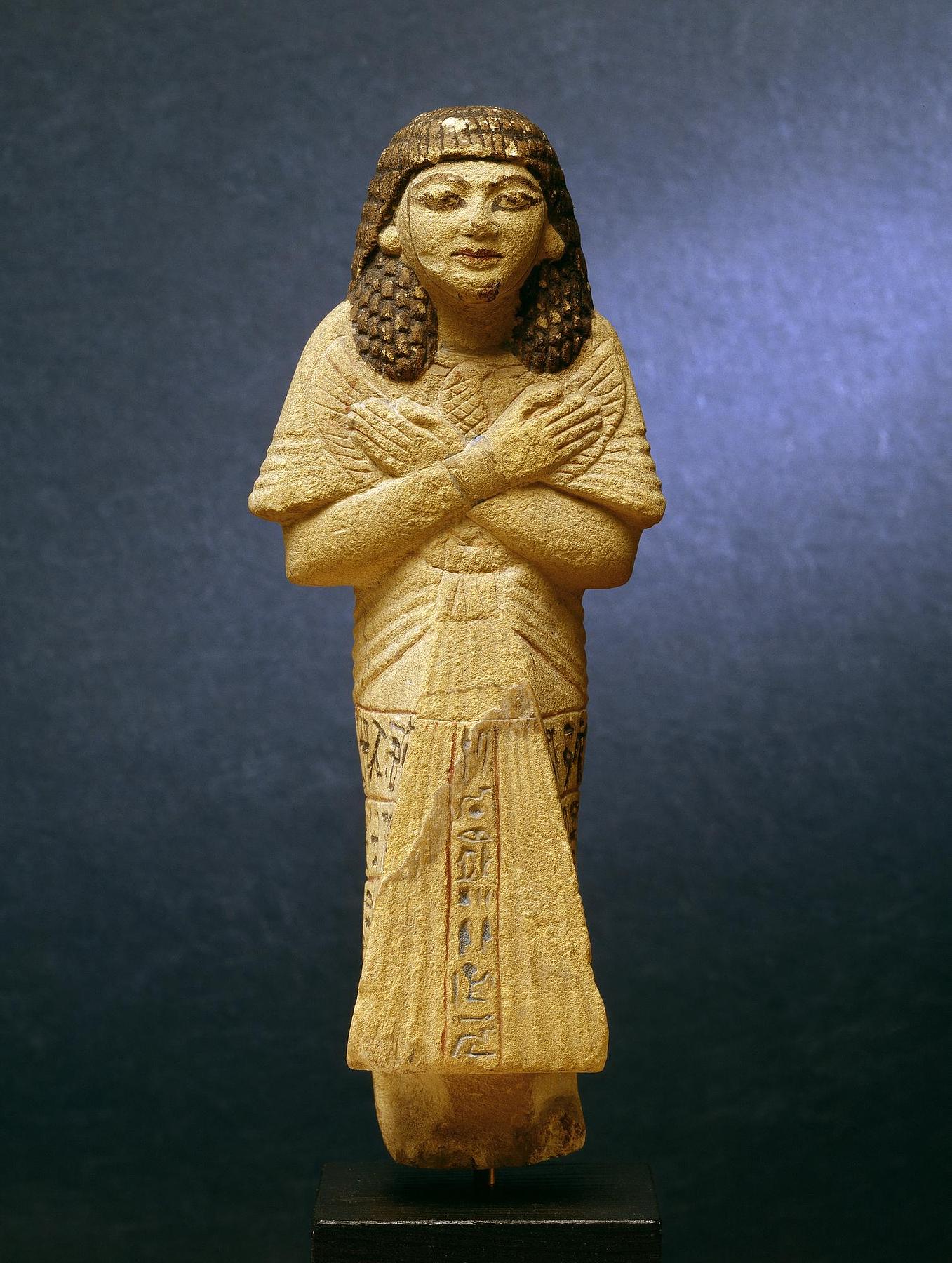
Ole Woldbye
Ole Woldbye
-
Location
Inventory Number
H360
Catalogue Number
H360Catalogue Level / Collection
Thorvaldsen's Collections > Collection of Antiquities (H)
Explanation
- Pi, is the name of the man this shabti figure depicts. With his folded arms he embraces a falcon. He is wearing a wide-sleeved tunic and a pleated skirt that reaches his ankles, which is typical of the period. He wears a wig and a false beard as well as disc-shaped earrings and a bracelet that adorns his right wrist. Traces of black, blue and red paint can be found primarily on the wig, eyes and hieroglyphics. The latter partly runs vertically down the skirt and partly in four horizontal bands around the shabti. The word shabti means “answerer” and in ancient Egyptian funerary tradition the figures served to work on Osiris’ fields in the afterlife on behalf of the deceased. There could be hundreds of shabtis in a single grave which most commonly were mummy-shaped holding agricultural tools. The figures first appeared in the Middle Kingdom (c. 2130-1640 BC.) but truly gained a foothold in the New Kingdom (c. 1550-1070 BC). The figures were included as part of the grave goods for the rich as well as the poor.
Dimension
- Height 19.2 cm
Inscription / Certification / Label
[Hieroglyffer]Type
Inscription
Art Form / Craft
Sculpture
-
Acquisition Mode
Bequest from Bertel ThorvaldsenAcquisition Date
March 24, 1844